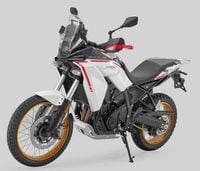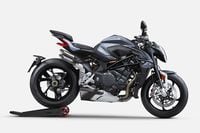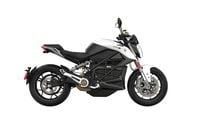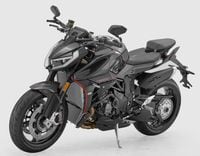While its rivals have forged ahead with radar-based Advanced Rider Assistance Systems (ARAS), Honda increasingly looks like it’s being left behind in exactly the sort of technological warfare that the company normally excels at. But behind the scenes Honda is hard at work on its own tech that could leapfrog the competition and put it back at the head of the field.
We’ve seen a steady stream of patents from Honda over the last few years, covering ideas including radar- and camera-based adaptive cruise control and crash mitigation systems, lane-keep assist, and a host of other technologies, but its latest development is designed to cope with a very specific issue faced by motorcycles and not cars: lane-splitting.
Lane-departure warning systems are already likely to be familiar to anyone who’s driven a modern car, bleeping and flashing warnings if you start to edge too close to a lane-dividing centerline or the side of the road without signaling. Some are infuriating, but the best are calibrated well enough not to interfere when they’re not required. The technology itself is simple, using cameras to monitor the lines on the road and to trigger a warning if you get too close or cross them, but lane-splitting on a motorcycle poses a specific problem. While lane-splitting is only legal in a handful of states in the US, it’s standard practice in much of the world including Europe for motorcycles to filter through traffic, riding on the lane markings rather than alongside them. Honda’s latest patent is designed to recognize that and provides for a lane-departure warning system that won’t constantly flash unnecessary warnings when lane-splitting.
The system, illustrated on a Gold Wing—surely the model that’s most likely to adopt Honda’s ARAS technology before it hits more mundane machines—is quite simple. It combines a radar, mounted in the nose and used to recognize other vehicles and allow for adaptive cruise control, with a single camera positioned directly above it, pointing at the road ahead. That camera feeds its signal to a computer that recognizes the road markings and activates the lane departure warning.
In normal use, it works exactly like the systems used in cars. If you drift too near the centerline or side of the road without using turn signals that show it’s intentional, it sets off the lane alert. An additional layer of programming, however, is designed to suppress that warning once the bike’s computer realizes you’re intentionally lane-splitting. Under the system described in the patent application, the initial lane-departure warning alert will still be activated when you initially cross the centerline or lane divider marking, but it also triggers a timer inside the computer. If it senses the same triggers that would normally set off the lane warning within a preset time—the patent suggests three seconds, but that figure could be altered—then it suppresses the warning and assumes that you’re intentionally lane-splitting.
But that’s not all it does. Having recognized that you are lane-splitting, and traveling in a gap between cars that’s narrower than a normal lane, the system recalibrates the collision warning function of the front-facing radar, slimming down its focal area ahead so it’s not triggered by the cars on either side that you’re filtering between.
While it’s still a patent application rather than a showroom reality, and not guaranteed to reach production, it’s clear that Honda is looking at every aspect of this technology before leaping into the radar-assisted ARAS fray and positioning itself to have a system that’s more comprehensive and capable than those of its rivals.











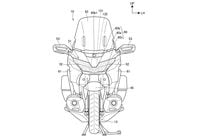
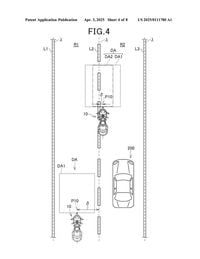
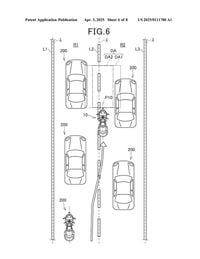
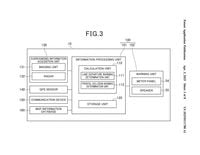
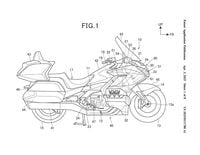
/cloudfront-us-east-1.images.arcpublishing.com/octane/6JPU4U2H7GOYZH2ZETYQBFLR2Q.jpg)
/cloudfront-us-east-1.images.arcpublishing.com/octane/CXNPUJDPPBCVHIRI5H7UOCX5HY.jpg)
/cloudfront-us-east-1.images.arcpublishing.com/octane/RZ5QNVGN4ZDRHJIKTPHGDX3HKA.jpg)
/cloudfront-us-east-1.images.arcpublishing.com/octane/ZGBASNGFXVBGXAQGDM6EWLNFXA.jpg)
/cloudfront-us-east-1.images.arcpublishing.com/octane/54BEFUE3XBDCTCAYUYQNZGAJV4.jpg)
/cloudfront-us-east-1.images.arcpublishing.com/octane/5XF2ZKSOR5G7TO23KSYT4JADTU.jpg)
/cloudfront-us-east-1.images.arcpublishing.com/octane/VHUK3FH6WFHLTHN7CKCATU36LM.jpg)
/cloudfront-us-east-1.images.arcpublishing.com/octane/HC4P3CYOXFF3NGXCQTGORFRYNY.jpg)
/cloudfront-us-east-1.images.arcpublishing.com/octane/ZNANUJGGKVBIFH3VRZ32BYC454.jpg)
/cloudfront-us-east-1.images.arcpublishing.com/octane/JACAJ4MPKJBTDBOZRTHXZAKLTA.jpg)
/cloudfront-us-east-1.images.arcpublishing.com/octane/7L3YWQXRBRECXMWQ6NBVAHU2EY.jpg)
/cloudfront-us-east-1.images.arcpublishing.com/octane/BPD5CKH5IFGDLG67Y24UMOXXGA.jpg)
/cloudfront-us-east-1.images.arcpublishing.com/octane/CHQ32B6TVBEPVFNPERY3AB2H3M.jpg)




